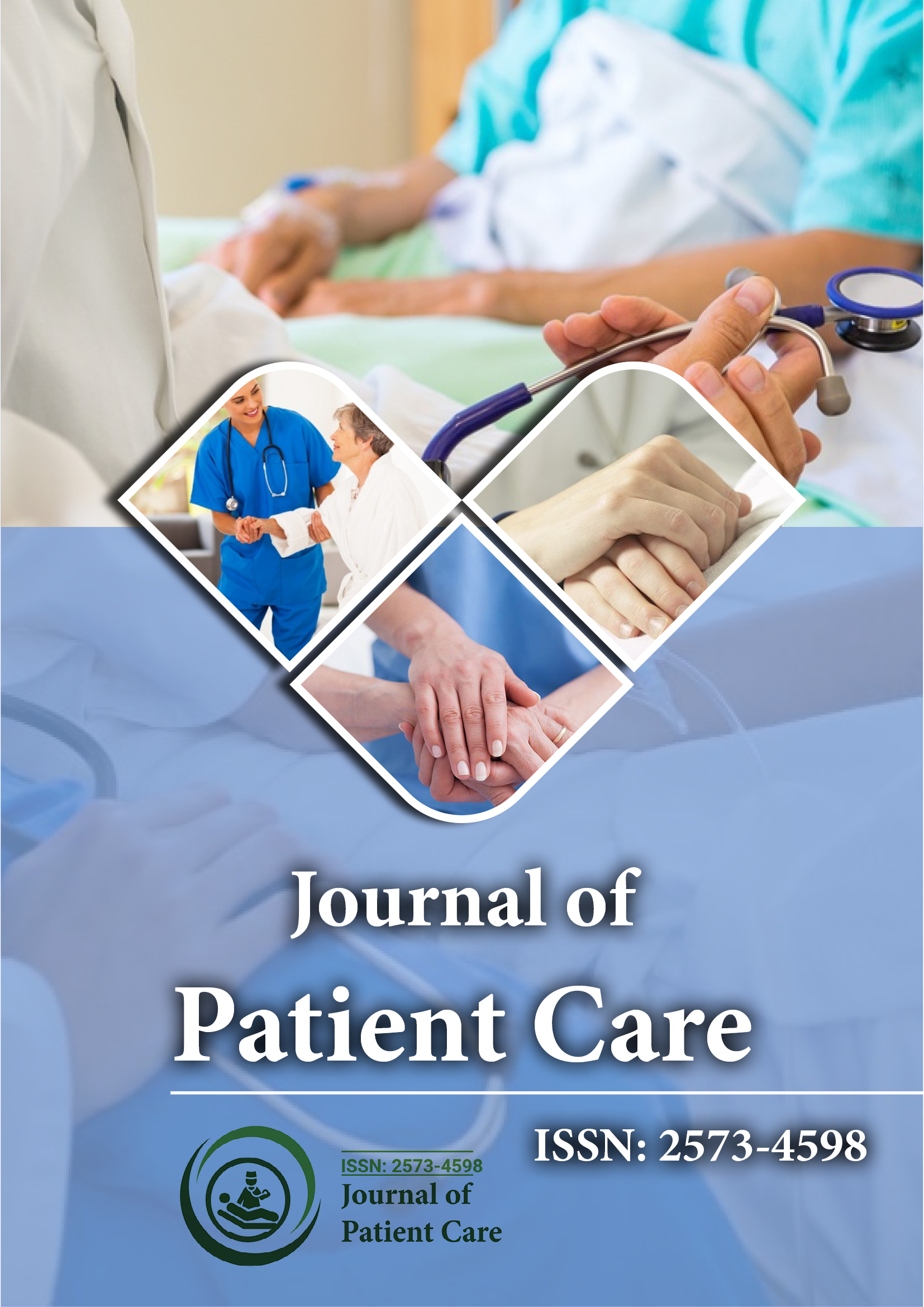Indexed In
- RefSeek
- Hamdard University
- EBSCO A-Z
- Publons
- Geneva Foundation for Medical Education and Research
- Euro Pub
- Google Scholar
Useful Links
Share This Page
Journal Flyer

Open Access Journals
- Agri and Aquaculture
- Biochemistry
- Bioinformatics & Systems Biology
- Business & Management
- Chemistry
- Clinical Sciences
- Engineering
- Food & Nutrition
- General Science
- Genetics & Molecular Biology
- Immunology & Microbiology
- Medical Sciences
- Neuroscience & Psychology
- Nursing & Health Care
- Pharmaceutical Sciences
Opinion - (2022) Volume 8, Issue 1
Patient Satisfaction with Nursing Care
Rita Aryee*Received: 04-Jan-2022, Manuscript No. JPC-22-178; Editor assigned: 06-Jan-2022, Pre QC No. JPC-22-178 ; Reviewed: 20-Jan-2022, QC No. JPC-22-178; Revised: 25-Jan-2022, Manuscript No. JPC-22-178; Published: 31-Jan-2022, DOI: 10.35248/2573-4598.22.8.178
Description
Patient care is the support provided to patients and their loved ones in the form of diagnostic and therapeutic counselling to create new decision-making models for patients. Patients receive guidelines on how to change their lifestyle to enable better treatment of healthrelated illnesses. Get educational support to get information about illness. Beginner level nursing technicians provide the most routine form of routine patient care. They monitor and record the patient’s vital signs and collect laboratory samples for examination. They help patients to eat, change clothes, provide personal hygiene, and change sheets and linen as needed. Postoperative pain management is an on-going challenge in tumor treatment, and nursing staff play an important role in this process. Postoperative pain is a complex phenomenon that involves physical, psychological, social, cultural, and environmental factors that are interrelated and affect the way pain is perceived, managed, and assessed. The purpose of this study is to identify the pain experience of tumor patients undergoing surgery and to assess the role caregivers play in relieving and managing postoperative pain in these patients. The patients who have undergone tumor surgery, such as gender, age, surgery performed, and pain management scores provided by nursing staff. The study included cancer patients of various types who underwent surgery at an oncology clinic. The nurse’s assessment of pain management was modest but significantly correlated with patient pain. During this time, we are also lacking in patient preparation for pain education. Nurses spend more time with their patients than any other member of the medical team. They play an important, positive and very important role in controlling pain and reducing pain in cancer patients. The role of the nurse includes patient confidence, pain assessment, problem cause identification, care planning, dosing, efficacy assessment, proper pain control and personalized treatment. Provides on going professional training to nursing staff, including postoperative pain management, including important details regarding assessment, management, and documentation.
Develop guidelines and protocols for postoperative patient pain management, including preoperative patient information. Improving patient safety while optimizing resources is a continuing focus of global health care. Inpatient settings often use sitters or individual observers to meet the monitoring needs of highrisk patients. However, sitters are costly and resource-intensive interventions. There is a lack of research supporting the use of babysitters as a means of reducing falls and improving safety outcomes. The need for babysitters for inpatients continues to grow due to the prevalence of mental illness and low access to community care. In addition to mental health inequalities, adult and pediatric populations require additional inpatient monitoring for suicide risk, substance withdrawal, delirium, and fall risk, eating disorders, escape, and general safety. Evidence-based disease management protocols guide patient care during phone and video visits initiated by the Home Telehealth Care Coordinators (HTCC). In addition, patients are trained in using interactive communication platforms on mobile phones, computers and tablets. This allows you to transfer personal data from connected devices such as blood pressure monitors, scales, and blood glucose meters to participate in remote monitoring. This program provides timely, efficient and equal access to care and a lasting patientcentered partnership. HTCC reduces the burden of illness and the effects of complications by providing continuous access to health information and resources. They encourage and empower patients to practice healthy behaviour and participate in activities that lead to self-management of acute and chronic conditions at home. Nurses need to educate patients about each application and procedure and provide the necessary explanations for illness, diagnosis, and treatment to ensure patient satisfaction and quality care delivery.
Nurses should emphasize the importance of communication and provide care within the framework of respect, favour and etiquette for the patient. In addition, the patient was very pleased with the overall quality of hospital care and nursing and said he would recommend this hospital to family and friends.
Many researchers have found a high level of satisfaction with the technical aspects of care. This is partly due to the emphasis on the technical aspects of nursing in the work system. Satisfaction with technical care and satisfaction with the information received has also been reported in several European studies. The implementation of the mechanical working model leaves no room for nurses to develop the interpersonal aspect of nursing.
Citation: Aryee R (2022) Patient Satisfaction with Nursing Care. J Pat Care.8:178
Copyright: &Copy; 2022 Aryee R. This is an open-access article distributed under the terms of the Creative Commons Attribution License, which permits unrestricted use, distribution, and reproduction in any medium, provided the original author and source are credited.
